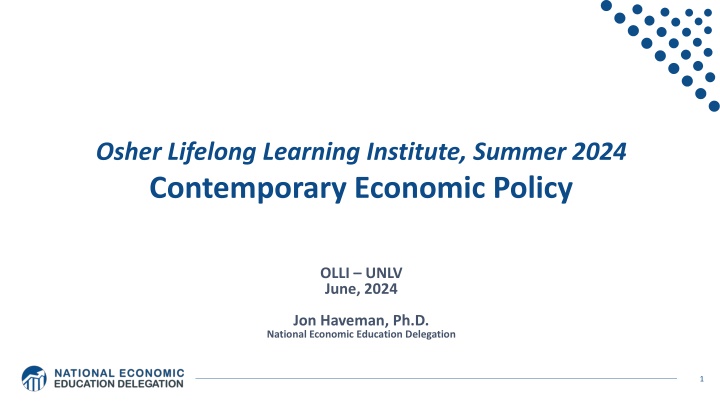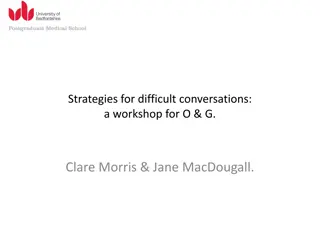
Conflict Processes and Management
Conflict Processes involve understanding patterns of behavior in international disputes, conflict resolution, and the scientific study of war. It includes quantitative and qualitative research methods, focusing on conflict management strategies.
Download Presentation

Please find below an Image/Link to download the presentation.
The content on the website is provided AS IS for your information and personal use only. It may not be sold, licensed, or shared on other websites without obtaining consent from the author. If you encounter any issues during the download, it is possible that the publisher has removed the file from their server.
You are allowed to download the files provided on this website for personal or commercial use, subject to the condition that they are used lawfully. All files are the property of their respective owners.
The content on the website is provided AS IS for your information and personal use only. It may not be sold, licensed, or shared on other websites without obtaining consent from the author.
E N D
Presentation Transcript
Osher Lifelong Learning Institute, Summer 2024 Contemporary Economic Policy OLLI UNLV June, 2024 Jon Haveman, Ph.D. National Economic Education Delegation 1
Available NEED Topics Include: US Economy Immigration Economics Healthcare Economics Housing Policy Climate Change Federal Budgets Economic Inequality Federal Debt Economic Mobility Black-White Wealth Gap Trade and Globalization Autonomous Vehicles Minimum Wages Healthcare Economics 2
Course Outline Contemporary Economic Policy - Week 1 (6/3): US Economic Update (Jon Haveman, NEED) - Week 2 (6/10): Healthcare Economics - Week 3 (6/17): Federal Debt - Week 4 (6/24): Economics of Immigration (Kelley Cullen, E. Washington Univ.) - Week 5 (7/1): Taxes: Rebellion, Rascals, and Revenue - Week 6 (7/8): Climate Change Economics - Week 7 (7/15): International Institutions (Alan Deardorff, Univ. of Michigan) 3
The Price of Healthcare: Exploring the Economics of Healthcare OLLI - UNLV June 10, 2024 Jon Haveman, Ph.D. NEED 4
Credits and Disclaimer This slide deck was authored by: - Veronika Dolar, SUNY Old Westbury - Jon Haveman, NEED This slide deck was reviewed by: - Jonathan Gruber, MIT - Robert Hansen, Dartmouth College Disclaimer - NEED presentations are designed to be nonpartisan. - It is, however, inevitable that presenters will be asked for and will provide their own views. - Such views are those of the presenters and not necessarily those of the National Economic Education Delegation (NEED). 5
Outline What is Health(care) Economics? Health Insurance and Outcomes Health Care Systems and Institutions
Health Economics is Big Business The United States spends A LOT on healthcare: - In 2022, U.S. national health expenditures were 17.3% of GDP, which is equivalent to around $4.5 trillion. - U.S. Healthcare is the 3rd largest economy in the world. For comparison, GDP in each country in 2022: - China: $17.9 trillion (2nd largest economy) - US Healthcare $4.5 trillion - Japan: $4.2 trillion - Germany: $4.1 trillion (3rd largest economy) (4th largest economy)
Where Does the Money Go? Source: Centers for Medicare & Medicaid Services, Office of the Actuary, National Health Statistics Group.
Markets Studied in Health Economics Markets for: - Physicians - Nurses - Hospital facilities - Nursing homes - Pharmaceuticals - Medical supplies o such as diagnostic and therapeutic equipment - Health Insurance
The Three Legs of the Healthcare Stool QUALITY ACCESS COSTS 10
Access 11
Health Insurance Coverage, 2022 92.1% Countries with Less Than Universal Coverage Countries with Universal Coverage Countries Country % of Persons % of Persons Slovakia 94.5 Australia 100 Chile 94.3 Canada 100 UNITED STATES 92.1 Czech Republic 100 Poland 91.5 Slovenia 100 Mexico 90.2 United Kingdom 100 Algeria 90.9 Greece 100 Jordan 55.0 Hungary 100 And 21 more 99+ 12 Source: Organization for Economic Cooperation and Development
But What About Wait Times? Percentage of adults aged 65+ Who waited more than 6 days For an appointment when sick. 13 Source: Commonwealth Fund, Comparing Nations on Timeliness and Coordination of Health Care, 2021
Physician Visits and Physician Supply Average physician visits per capita, 2017 Practicing physicians per 1,000 population, 2018 9.9 8.3 OECD average: 6.8 7.7 4.8 6.8 4.3 4.3 4.1 OECD average: 3.5 6.1 3.7 3.6 3.3 3.2 4.5 4.3 2.9 2.7 4.0 2.6 3.8 2.8 SWE NZ US SWIZ NOR FRA CAN AUS NETH GER NOR SWIZ GER SWE AUS NETH NZ FRA UK CAN US 14 Source: Roosa Tikkanen and Melinda K. Abrams, U.S. Health Care from a Global Perspective, 2019: Higher Spending, Worse Outcomes (Commonwealth Fund, Jan. 2020).
Percent of Women Ages 1864 Who Reported Going to the Emergency Room in the Past Two Years 45 37 37 32 29 28 24 24 21 21 12 GER UK NETH AUS NZ NOR SWIZ FRA SWE US CAN 15 Source: Munira Z. Gunja et al., What Is the Status of Women s Health and Health Care in the U.S. Compared to Ten Other Countries? (Commonwealth Fund, Dec. 2018).
Access Notes Insurance coverage in the U.S. is not universal. - It is universal in every other developed country. Wait times are not necessarily lower in the U.S. Supply of medical personnel and equipment may be lower than elsewhere. Emergency room use is higher in the U.S. than elsewhere. 16
Quality 17
Life Expectancy: How Does the US Compare? 84 SWIZ: 83.6 82 Everybody else NOR: 82.7 FRA: 82.6 80 AUS: 82.6 SWE: 82.5 78 CAN: 82.0 NZ: 81.9 76 NETH: 81.8 74 UK: 81.3 United States GER: 81.1 72 US: 78.6 70 1980 1985 1990 1995 2000 2005 2010 2015 Switzerland US = 5 years 18 Source: Roosa Tikkanen and Melinda K. Abrams, U.S. Health Care from a Global Perspective, 2019: Higher Spending, Worse Outcomes (Commonwealth Fund, Jan. 2020).
Life Expectancy at Birth by Race/Ethnicity, 2019 Race/Ethnicity Life Expectancy (Years) 78.8 78.8 74.8 81.9 85.6 All Races White Black Hispanic Asian Source: KFF, Key Data on Health and Health Care by Race and Ethnicity
Income Also Matters Reflecting Access? Life Expectancy (Years) (Years) Life Expectancy Difference High vs Low High vs Low Difference Sex Sex Income Category Income Category Highest Incomes (top 1%) Highest Incomes (top 1%) 88.9 88.9 Women Women 10.1 years 10.1 years Lowest Incomes (bottom 1%) Lowest Incomes (bottom 1%) 78.8 78.8 Highest Incomes (top 1%) 87.3 Men 14.6 years Highest Incomes (top 1%) 87.3 Lowest Incomes (bottom 1%) 72.7 Men 14.6 years Lowest Incomes (bottom 1%) 72.7 20 Source: https://healthinequality.org/documents/paper/healthineq_summary.pdf
Infant Mortality International Comparison Deaths per 1,000 live births 5.80 4.70 4.20 3.90 3.80 3.50 3.30 3.20 3.10 2.30 2.00 SWE NOR AUS GER SWIZ NETH FRA UK NZ CAN US 21 Source: NEED from OECD Data
Infant Mortality by Race/Ethnicity 2016 Deaths per 1,000 live births 11.4 9.4 7.4 5 4.9 3.6 Black White Non-Hispanic Black American Indian / Native Hawaiian or other Pacific Islander Hispanic Non-Hispanic White Asian Alaska Native 22 Source: NEED from CDC.gov
Maternal Mortality Rate Maternal deaths per 100,000 live births. 14 11 9 8 7 7 6 6 5 5 4 SWE NOR SWIZ AUS GER CAN NETH FRA UK NZ US 23 Source: Munira Z. Gunja et al., What Is the Status of Women s Health and Health Care in the U.S. Compared to Ten Other Countries? (Commonwealth Fund, Dec. 2018).
Percent of adults who have experienced medical, medication, or lab errors or delays 19.0 20 17.0 18 15.0 16 14.0 14 11.0 11.0 12 10.0 10 8.0 7.0 8 6 4 2 0 US SWE CAN SWIZ UK AUS NETH FR GER 24 Source: 2016 Commonwealth Fund International Health Policy Survey.
Prevention and Screening The U.S. excels in some prevention measures (high ranking): - including flu vaccinations and breast cancer screenings. The U.S. has: - The highest average five-year survival rate for breast cancer, - but the Lowest for cervical cancer.
Flu Immunization Percentage of adults age 65 and older immunized (%). 73 68 65 64 61 OECD average: 44% 50 49 35 34 UK US NZ NETH CAN FRA SWE GER NOR Source: Roosa Tikkanen and Melinda K. Abrams, U.S. Health Care from a Global Perspective, 2019: Higher Spending, Worse Outcomes (Commonwealth Fund, Jan. 2020).
Breast Cancer Screening Percentage of females ages 50 69 screened (%). 90 80 78 76 75 72 OECD average: 60% 55 54 51 50 49 SWE US NETH NOR UK NZ AUS CAN GER FRA SWIZ Source: Roosa Tikkanen and Melinda K. Abrams, U.S. Health Care from a Global Perspective, 2019: Higher Spending, Worse Outcomes (Commonwealth Fund, Jan. 2020).
Perception of Quality of Medical Care Percent of women ages 18 64 who rated their quality of medical care as excellent or very good. 62 61 59 55 54 51 49 47 39 33 24 US SWE CAN NZ GER NOR NETH FRA AUS SWIZ UK 28 Source: Munira Z. Gunja et al., What Is the Status of Women s Health and Health Care in the U.S. Compared to Ten Other Countries? (Commonwealth Fund, Dec. 2018).
Quality of Care Notes Metrics of quality in the U.S. are not very good. Quality of care is not considered very good in the U.S. The system has bright spots! But isn t very well thought of 29
Costs 30
Health Care Spending as % of GDP, 19802018 18 United States US: 16.9% 16 SWIZ: 12.2% 14 GER: 11.2% FRA: 11.2% 12 SWE: 11.0% 10 Everybody else CAN: 10.7% 8 NOR: 10.2% NETH: 9.9% 6 UK: 9.8% 4 AUS: 9.3% 2 NZ: 9.3% 0 1980 1985 1990 1995 2000 2005 2010 2015 Source: Roosa Tikkanen and Melinda K. Abrams, U.S. Health Care from a Global Perspective, 2019: Higher Spending, Worse Outcomes (Commonwealth Fund, Jan. 2020).
International Per Capita Healthcare Spending Source: Roosa Tikkanen and Melinda K. Abrams, U.S. Health Care from a Global Perspective, 2019: Higher Spending, Worse Outcomes (Commonwealth Fund, Jan. 2020).
National Healthcare Expenditure Per Capita 12000 11,172 10000 8000 2018 Dollars 6000 4000 1,239 2000 0 1960 1970 1980 1990 2000 2010 2020
Why is Healthcare Spending Increasing? Costs in the United States, and elsewhere are increasing rapidly. The share of economic spending on health care has been steadily increasing for all countries because: - Health spending growth has outpaced economic growth. - Richer countries demand more services, like attention to health. Also because of: - Advances in medical technologies. - Rising prices in the health sector why?
Why Are Costs so High in the US? One Reason: The United States is the only profit-motivated healthcare system in the world. 37
Why Are Costs so High in the US? Another Reason: Our public health system isn t very good. (We have a health RESTORATION system, NOT a health CARE system.) 38
Obesity Rates, 2017 Percent (%) 40.0 32.2 30.4 28.7 26.3 OECD average: 21% 23.6 17.0 13.4 13.1 12.0 11.3 SWIZ NOR SWE NETH FRA GER CAN UK AUS NZ US 39 Source: Roosa Tikkanen and Melinda K. Abrams, U.S. Health Care from a Global Perspective, 2019: Higher Spending, Worse Outcomes (Commonwealth Fund, Jan. 2020).
Adults with Multiple Chronic Conditions, 2016 Percent (%) 28 22 11-country average: 17.5% 18 18 17 16 16 15 15 14 14 NETH UK AUS SWIZ NOR NZ GER FRA SWE CAN US 40 Source: Roosa Tikkanen and Melinda K. Abrams, U.S. Health Care from a Global Perspective, 2019: Higher Spending, Worse Outcomes (Commonwealth Fund, Jan. 2020).
Health Care Markets are Different Premiums Insurer or third-party payers Sponsor (Gov t or Employer) Premiums (individual policies) Money (fixed or variable payments) Taxes or Lower Wages Claims Insurance Coverage Services Consumers Producers Price Health Care Providers (hospitals, physicians) Patients Out-of-pocket fees 42
How Much Did Your Flu Shot Cost? Who knows? It s generally offered for free. Providers of the shot do pay for it. - Some reported prices: o Sacrament, CA o Long Beach, CA o Washington, DC Who really pays for the flu shot? - YOU DO! Higher premiums. Prices are negotiated with the Vaccine producer. $85 $42 $15 Differences are a reflection of More or less bargaining power. 43 Source: https://kffhealthnews.org/news/the-startlingly-high-cost-of-the-free-flu-shot/
Hospital Monopolization Less competition in health systems, hospitals, medical groups, and health insurers has surged in recent years. Over an 18-month period between July 2016 and January 2018: - Hospitals acquired 8,000 more medical practices. - 14,000 more physicians left independent practice to become hospital employees. Between 1999 and 2018, hospital profit margins soared! - From 100% in 1999 to 317% in 2018. 45
Medicare Modernization Act Prescription Drug Component Medicare Part D, by law, cannot negotiate drug prices like other governments do. In 2017, Medicare spent nearly $8 billion on insulin. - Had Medicare been allowed to negotiate drug prices (as the U.S. Department of Veterans Affairs (VA) did), o Medicare might have saved about $4.4 billion just on insulin. 47
Insulin Blood Thinner Diabetes Blood Thinner
Average Annual Insurance Premiums, 1999-2018 Employer provided, Not Adjusted for Inflation Single: Family: ~$5,900 to ~$19,500 ~$2,000 to ~$7,000 Average Annual Rate of Change Rate of Change (%) Average Annual Inflation Inflation 2.19 2.19 Health Care CPI Health Care CPI 3.68 3.68 Single coverage Single coverage 6.51 6.51 Family coverage Family coverage 6.52 6.52 49 Source: The Commonwealth Fund
Reason for Higher Health Insurance Rates Rising prices in the health sector Advances in medical technologies Increased demand for services Lack of competition in health insurance markets






















